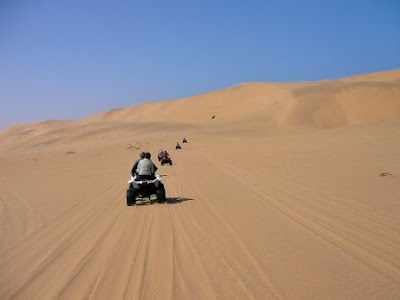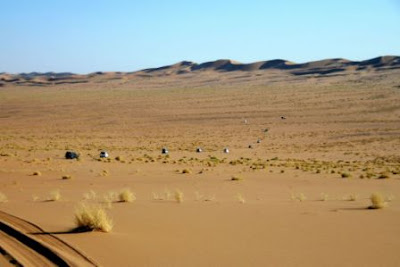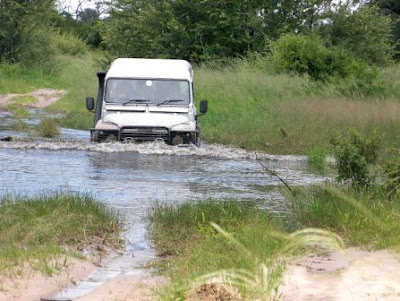“Morocco is known to the ancient Arabs as al-Maghreb al-Aqsa, the Farthest Land of the Setting Sun, alluding to its position on the Western extremity of North Africa. Ancient mariners, medieval conquerors and modern colonisers long sought to tame this land on the edge. But its rugged terrain and robust tribes endured. It has absorbed the influences of Europe, Africa and Arabia, but Morocco remains unique.” – Lonely Planet. In fact, if you want to see how people lived in the early years you can visit Morocco today. Well we did. My daughter, Pinnie Hearn, planned the whole trip and I simply jumped in.
 |
| Pinnie with view over Fes |
 |
| Alley way in Fes |
 |
| Pinnie and Berber Women in her Cace House |
First impressions stick – for a while. Having landed at the Casa Blanca Airport, we took the train to Casa Blanca from where we had to get a connecting train to Fes. We were impressed by the punctuality of this train and the comfort of it being rather empty. We however had another think coming. It was a Friday afternoon peak hour and our next train was the main line transporting people for the weekend from all stations between Marrakesh in the South to Fes in the north. So, not only was the train approximately one hour late, but it was packed to well over capacity. Considering the fact that we both carried two fairly heavy suitcases complicated matters somewhat more. If I say capacity it means that corridors and the entrance landing of each coach was so full that the doors could only be closed after a fair bit of additional squashing – and at each following station, more passengers would join the squash. After about ten stations we were gradually squashed down the corridor and finally squashed our weary bodies into seats for the final 2 hours of our theoretical three hour, becoming a four and a half hour trip. Having any meaningful discussion was not easy. If you are Caucasian you are immediately accepted as being French and addressed as such and Arabic was way beyond our understanding. We reached Fes safely.
Our introduction to the city of Fes and its people was the start of our further education. There appeared to be no street system and nothing has a fixed price. Not the taxi, food, accommodation, asking direction or – no nothing.
 |
| Transport |
Having been woken up by the pre 05h00 prayer call, our next two days were to be within the maze of streets and alley ways of the Fes medina, lined with souqs (shops) selling shoes, carpets, clothes, food, meat, spices, antiques and just about anything small enough to stock. With these streets too narrow for any engine driven transport, everything (this includes building materials, hides and skins, vegetables, meat, etc) is either brought in either by human power or mostly by donkeys and mules with which you share the “streets”. Several buildings accommodate a variety of artisan’s producing brass lamps, shoes and other leather products, furniture, jellabas and western clothes. Beware of showing interest in any goods or even just making eye contact with the shopkeeper and you will be lured into a shop, be offered sweet mint tea and have a battle to get away without leaving some of your funds there. Everything has a price, but after negotiation it turns out to be totally different to the one originally quoted. In all cases, after cold blooded bargaining, we ended up paying anything between 50 and 25 percent of the input price which is often only established when you seriously decide that you have lost interest in the product because of the price and get up to leave the shop. Even when you ask directions (and take note that you will get lost in the maze of streets), a self appointed “guide” will direct you and demand money. Over our twelve day stay this really got to us so much so that we were keen to avoid making contact with anybody simply because of the “in your face” haggling for everything.

We visited most of the tourist attractions including several mosques, the well known tannery, spice market and just wandered in awe of something so different to what we are used to. At the tannery we were advised to put on a gas mask (rolled up fresh mint leaves stuck up each nostril – not to elegant but effective). We later made friends with a shopkeeper who also had a “factory” where brass lamps and wooden furniture and doors are made. Several buildings in the old town were Inns during the time when products such as salt, spices and other goods were transported to Fes by camels and donkeys. The ground floor accommodated the stables while the travellers stayed on the upper level. Several of these old buildings are now used for different purposes and the word “factory” got new meaning when I saw that these artisans often sat (and in some cases sleep) in a small (2m x 3m what used to be a bedroom) to produce his products day after day.
 |
| Butchery and Transport |
On the second day we decided to do the self guided tour of Fes and got well and truly lost so that we had to “buy” our directions at some cost from another unofficial guide. Later the afternoon we climbed a hill just outside of the city gates past a Berber cemetery and up to some old ruins from where we took photos of the city. On our way back (and lost again) we met a Canadian girl (Claire Vivier) who directed us to a restaurant where we had yet another tagine for supper. During our time together she said that she was very much interested in our planned tour and decided to join us two days later. She was a real blessing!
Our next stop would be Bhalil, a little town some 30 kms from Fes. What an interesting place full of old world tradition with some people still living in “houses” carved into the rocks, ladies sitting in groups all over town crocheting buttons for jellaba’s and some doing there washing with the communal washing stream of water that runs through town. Pinnie joined in the washing to their great delight. We also made a brief visit to the small Berber town of Sefrou (also known for its cherry festival) and its manageable smaller medina where a large Jewish community had settled (the Mellah) many years ago, in distinctive wooden-galleried houses. A big flood through the middle of town resulted in the majority of the Jews were wiped out while the rest fled for Israel in the sixties following the six day war. Here we also artisans making anything from wooden ploughs to weaving braids for jellabahs – all by hand.
 |
| Berber Toareg Tent |
Then on to our next adventure – Merzouga and the Sahara Desert. Our tour guide and driver (Abdul and Aziz) collected us in Bhalil and we drove the approximately 350 km south towards Merzouga over the Middle Atlas mountains, past pine forests, lakes and areas where we had our first sights of Berber Toaregs and their lifestyle in barren unforgiving land making a living from the land and trading herbs harvested from the plants naturally occurring in the mountains. As our travels continued, it struck me how similar (traditional) these lifestyles appeared to be with those of Bedouins seen in the Middle East, Israel and the Ankara area of Turkey. Following Middelt we drove towards Erfoud where we passed a huge oasis (Ziz Palmeraies) with palm trees and gardens stretching for over 15 kilometres. Even approaching the desert, we passed through areas where water is distributed by canals to irrigate large cultivated areas.
 |
| Into the Sahara |
Late afternoon we departed on camels heading for the horizon of Erg Chebbi towards the Algerian Border! The dromedary was not one bit comfortable and to add insult to injury, my saddle was mounted at a slight angle. We rocked on while the sun was setting creating beautiful scenes of the dunes with the lengthening shadows – all slightly spoilt by a camel with a most unforgiving suspension. After crossing an endless number of dunes we finally reached a dune from which we looked down on our “Toareg” camp for the night. The dromedaries were made to lie down (with a groan) and we walked to our accommodation. The Berbers served us supper followed by music and dances which eventually developed into a compulsory dance for all – actually very amusing. Up early the next morning to see the sun rise over the Sahara Desert. Beautiful! Then the return trip with a better positioned saddle – much, much better, but I was still far from putting a dromedary on my wish list.
 |
| Todra Gorge |
Next destination was Oarzazate via Tenerhir, passing many old Kasbahs, stunning palmeraies and Berber villages to the impressive Todra Gorge. This massive fault in the plateau, dividing the Atlas Mountains from the Jebel Sarhro rises 300 m straight up at its narrowest point. From Oarsasate, travelling west, despite it being barren agriculture is practised mostly by Toareg livestock farmers whereas the valleys are planted with olives, date palms, fruit trees, nuts and lucerne. Just before reaching the well maintained huge Kasbah (family fortress) of Ait Benhaddou (Ait meaning “Family of”); we stopped at an old man who was sitting in the shade of his house with his pet snake in his hand. He entertained us by draping the snake around our necks and heads thoroughly enjoying each moment. It appeared as if the snake also (fortunately) enjoyed the game. We toured the Kasbah under the guidance of our driver Aziz enjoying the history of how they lived in these fortresses in days gone by. Ait Benhaddou was also used in many films of which the most recent one was Gladiator. It remains wonderful to see what can be achieved with mud bricks!

Then over the never ending winding, blind curves, mother of all passes crossing the High Atlas Mountains. While it was very hot in the valleys, it was freezing at the top of the pass. On the other side of the mountain we stopped at a little shop where the “miracle working” Argon Oil (used by Berbers for centuries to heal scars, relieve rheumatic pain and as an anti wrinkle cream) is extracted from Argon seeds for which this area is well known. We were spontaneously offered the usual mint tea and a tajine of couscous (traditional for Fridays). Then on to the much publicized Marrakesh with its world renowned Djemaa el-Fna (Market). For me Marrakesh was a disappointing (if not irritating) experience. The narrow streets and alleyways of the medina with many more tourists and now also motorcycles and bicycles in the already crowded narrow streets and the even more bold shopkeepers did not impress. Even so, Marrakesh contained a number of “must sees”.
+of+DSC_1216.JPG) |
| Ait Benhaddou |
At the Djemaa el-Fna, snake charmers is a must see. In fact, you cannot miss them and should you glance in that direction you would be approached to again part with some money. Having learnt our lessons we negotiated a deal to take some photos, but at the end of our cession we had to face the whole team of snake charmers and the deal increased five fold. Having now been much the wiser as to the ways of the people, we simply paid our agreed amount, turned our backs and walked away. Pinnie decided that she may not leave Marrakesh without having experienced a massage and a hammam (traditional scrub removing the top cutaneous layer of the skin). We also visited the gardens developed by Yves St Laurent as a gift to Marrakesh and the impressive private photo collection of La Maison de la Photography before returning to the Djemaa el-Fna for a last supper. By now our stomachs were protesting audibly about the Moroccan treatment.
The bus trip to Essaouira past huge olive plantations along the way was very comfortable. Essaouira is a coastal town with impressive ramparts along the sea, a port with many fishing boats and a much more user friendly and laid back lifestyle. We walked through the town enjoying the “freedom” of not being forced into decisions all the time and enjoyed their restaurants. The only compulsory tour was the forced (by Pinnie), high speed march to the ramparts to take photos of an impressive sundown.
Before leaving Morocco, we just had to do a hike into the high Atlas Mountains and duly arranged for a taxi to drive us from Marrakesh to Imlil via Asni. The route was interesting and we reached a vantage point from where we had a good view of Jebel Toubkal. We hiked further up the mountain past Berber settlements to an impressive waterfall. On our way down we passed hikers on their way up and some doing it the easy way – on mules.

Public transport, both buses and trains in Morocco, is well organised and comfortable. By now we were pretty home sick and ready to go home, but Casa Blanca had one must see in the form of the Hassan 11 Mosque built to commemorate the former king’s 60th birth-day in 1993. It employed over 6000 Moroccan artisans and cost more than half a billion dollars. It is big enough to cover the St Peters Cathedral. By now being averse to haggling even for taxi fares, we decided to walk the five kilometres to the mosque and I depended on the proven ability of my GPS/cum guide, Pinnie for directions. The Mosque was all it was said to be. Massive and most impressive, perched and actually partly suspended over the sea.
In summary, the constant haggling and attempts to, in some way or another, squeeze some money out of you that really got to us to such an extent that we will think twice before travelling to Morocco again. On the other hand, Morocco, its ancient history and rich heritage was a more than interesting. Our travels through the country side, learning more about the country and its peoples, were most enjoyable and we have met and made friends with several wonderful people of which we will certainly have fond memories.






















